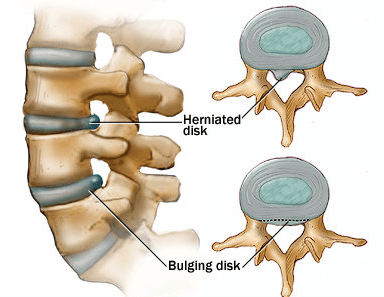Bulging Discs
Bulging Disc
A bulging disc refers to a condition in which the intervertebral disc, which acts as a cushion between the vertebrae in the spine, extends beyond its normal boundaries and protrudes into the spinal canal or the nerves exiting the spine. This can occur in any part of the spine but is most commonly seen in the lower back (lumbar spine) and neck (cervical spine).
A bulging disc may cause no symptoms or may lead to pain, numbness, or weakness in the area of the body where the affected nerves travel. The symptoms can vary depending on the location of the bulging disc and the extent of the compression of the nerve.
A bulging disc can be caused by aging, degeneration of the disc, injury, or trauma to the spine. Treatment options may include physical therapy, pain management, and in some cases, surgery.


